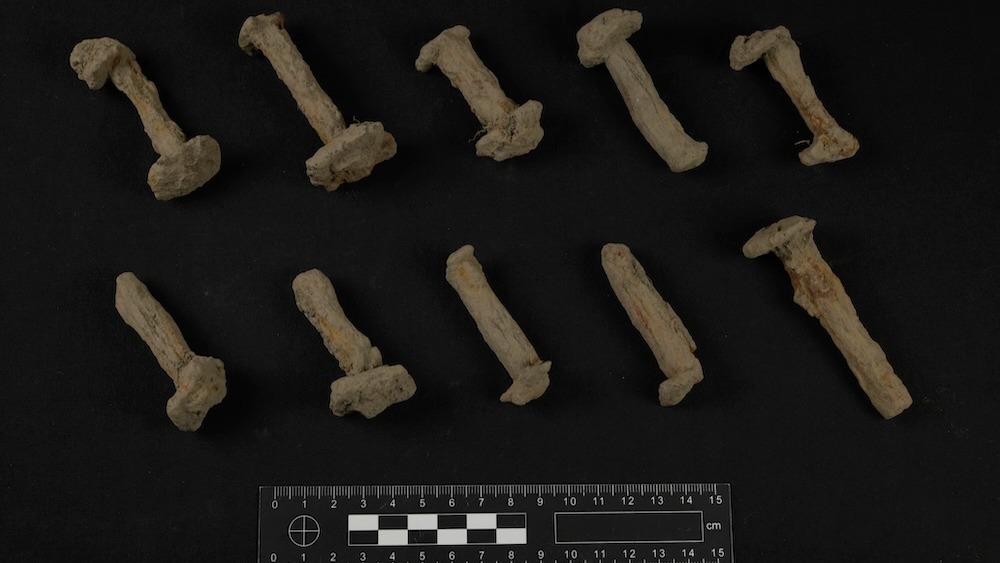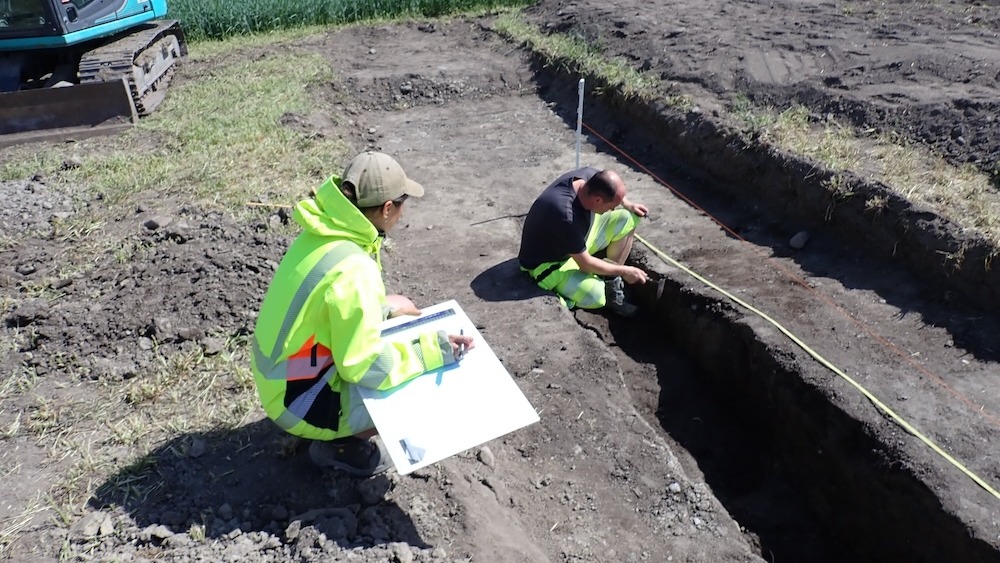
Dozens of iron rivets scattered around a farmer's field in Norway could be part of a Viking ship burial, archaeologists say.
In 2015, a metal detectorist discovered three of the rivets while exploring Jarlsberg Manor in southeastern Norway. After the detectorist alerted authorities to the find, a team of archaeologists equipped with metal-detecting equipment descended on the field and unearthed seven more rivets, Science Norway reported.
Now, nearly nine years later, archaeologists have unearthed a total of 70 rivets. Based on the size of the metal pieces, researchers think the rivets were used to hold together wood planks measuring about 8 feet (2.5 meters) long, suggesting a fairly large Viking Age ship was buried there.
"We've found a great variation of rivets, with the longer ones so big that they must have come from a large ship," excavation leader Christian Løchsen Rødsrud, an adviser for the Museum of Cultural History at the University of Oslo in Norway, told Live Science. "The larger ones are comparable to other buried ships we've found at Gokstad and Oseberg," two other sites with burial mounds in Norway.
Rødsrud estimates that the ship was between 49 and 75 feet (15 and 23 m) long. However, researchers cannot estimate a date for the ship because there is no surviving organic matter they can radiocarbon-date.
Related: Oldest known ship burial discovered in Norway predates Vikings
"We've tested the topsoil but haven't found anything yet," Rødsrud said. "I would estimate that it's from sometime between A.D. 750 and 1000."
In addition to the rivets, archaeologists discovered two horse crampons — spikes that would have been attached to the animals' hooves for traction in "icy conditions." Researchers aren't surprised that they found equestrian items at the site, considering that horses buried alongside ships is a "recurring theme in Viking Age burial customs and are a typical phenomen[on] one would expect in a ship burial," Science Norway reported.
In fact, there have been numerous accounts of archaeological excavations in which Vikings have been buried with their trusty steeds.
There are about 15 known Viking ship burials in Norway. Although there's no definitive consensus on why Vikings buried their ships, they may have believed that the vessels could be used in the afterlife, according to the University of Cambridge's Department of Anglo-Saxon, Norse and Celtic.

It's too early in the investigation to know who the ship belonged to, Rødsrud said, but some evidence points to a Viking king.
"The ship could have been Bjørn Farmann's, who was the king of Vestfold," Rødsrud said.
Between 1917 and 1918, Norwegian archaeologist A.W. Brøgger discovered a different burial mound on the other side of the field and dubbed it the Farmann mound. He was convinced that a ship was buried here, but he uncovered only spades and a stretcher during his excavation, Science Norway reported.
But whether Brøgger's hunch was right remains to be seen. "It's too soon to tell," Rødsrud said.







